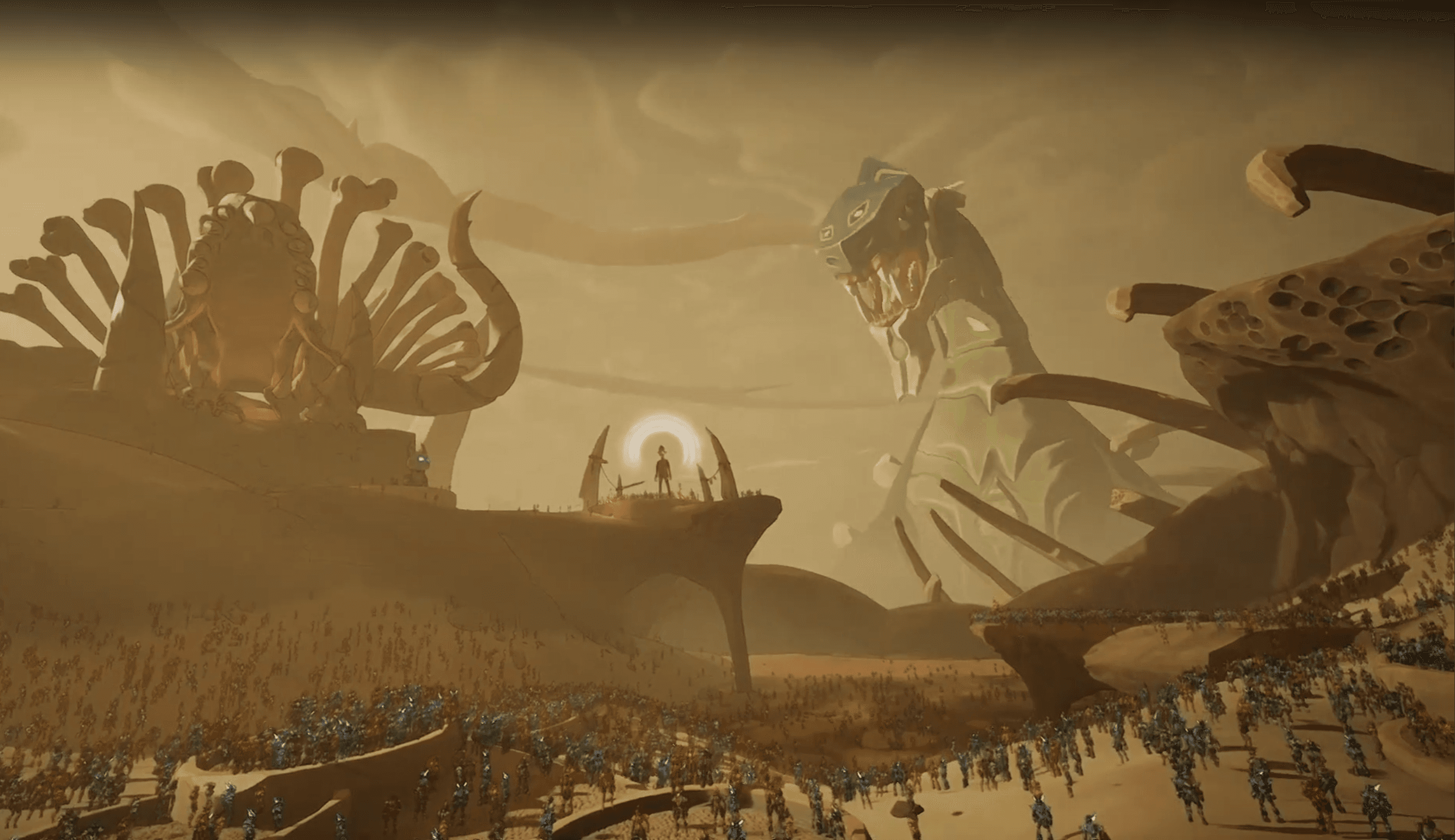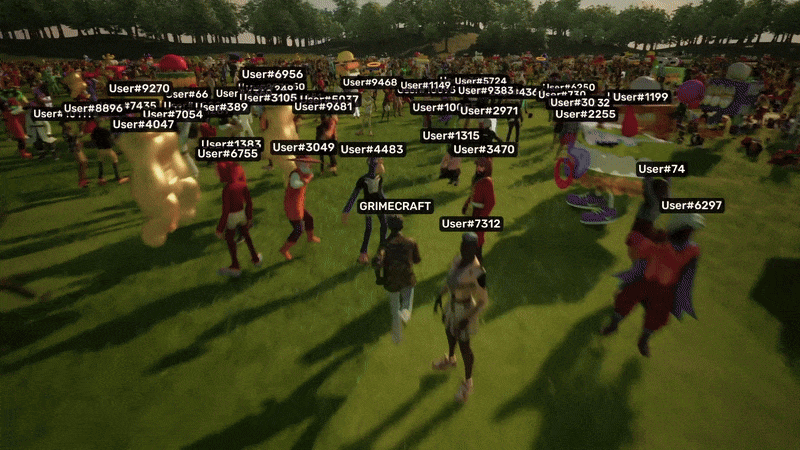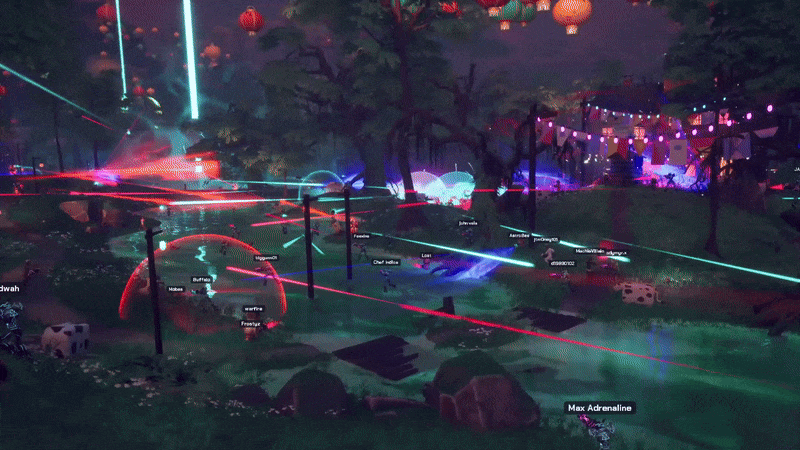Morpheus: The Next Era of Massive Gaming
By Aladdin ElGanainy | 24 October 2025

Before joining the Morpheus team, I worked at Splash Damage, the studio behind multiplayer titles like Star Wars: Hunters. That experience shaped how I think about real-time gameplay, but Morpheus took that foundation and expanded it exponentially. Over the past four years, I’ve gone from designing for 8-player matches to architecting systems that handle 10,000 players at once.
Traditional multiplayer is about precision, milliseconds, encounters, and flow. At Morpheus, it’s about ecosystems, communication, synchronization, and concurrency shaping the experience as much as gameplay itself. We started with replication delays in the hundreds of milliseconds and simple vertex-animated textures standing in for players. Now, latency is down, fidelity is up, and Morpheus has evolved into a production-ready engine powering record-breaking events. It’s been an incredible transformation, and I’m proud to have been a core contributor every step of the way.

From 10 to 10,000: The Architecture of Scale
Most platforms hit the same hard ceiling: shard your audience into instances of 10 or 100 players. It works, but it breaks the illusion of “massive”. Morpheus changes this with a custom networking layer built to synchronize thousands of actors via a distributed backend and a single server with action gameplay viable latency.
Our early experiments with scale worked, but the developer experience was still challenging, especially when dealing with server meshing, cross-server communication and authority handover. With Morpheus, those challenges (and their problems) are gone. Developers don’t need to engineer complex topologies, rewrite net code, or micromanage concurrency. Instead, they can implement gameplay as if targeting a standard multiplayer game: define actors, write logic, and trust Morpheus to handle distribution and replication. The same implementation works whether you have 100 players or 10,000.
For creators, that means more time focused on mechanics, systems, and design, not infrastructure. Morpheus simplifies the hardest part of multiplayer at scale, letting studios concentrate on gameplay, not plumbing.
Networking Innovation: Solving Density
Networking is where Morpheus really comes alive. The system isn’t just about scale, it’s about density. Every player can see every other player, with no smoke and mirrors. Just thousands of people sharing one coherent space. In fact, we build all our systems with assumption that all 10k+ players will be sending the most expensive updates to each other at all times, which is something we call density invariance.
The heart of it all is our compression pipeline. Morpheus uses cutting-edge techniques to compress, transmit, and decompress huge volumes of updates, which allows clients to receive data about all other players without running out of bandwidth. It keeps latency low and motion smooth, even when the world is full of action.
Interest management used to be another beast. Early on, determining which actors should receive which updates was a complex distributed systems problem, causing huge bottlenecks in our backend. Now, with players able to see every player in the game, we can efficiently handle prioritization on the clients. We stream the entire actor set continuously, prioritizing what matters most without ever losing the big picture. It’s density without the cost.
One of my proudest fixes came when we turned our decompression from having a linear complexity into constant-time execution, completely removing the networking thread bottleneck even with 10,000s of players. Together, these optimizations enabled Morpheus to be used for real-time chaos, where 10,000 players can move, shoot, emote, and interact without breaking the flow.

Rendering Innovation: Mass Scale Avatars with dynamic LoDs
Traditionally, scale meant sacrificing visual fidelity, particularly when it comes to rendering and animating distinct characters.
Morpheus solves this with an innovative GPU-based crowd rendering system that allows thousands of avatars to be visualized and animated simultaneously. The rendering team have done a great job here, designing a system capable of animating instanced skeletal meshes entirely on the GPU. This breakthrough generates indistinguishable imposters, seamlessly switching between full-fidelity actors and crowd-rendered versions in real time. Faraway players are rendered with simplified geometry, reducing GPU workload without breaking immersion while close by players are rendered using a native Unreal Character.
This GIF demonstrates how the LoD switching is seamless. You can only tell by the nameplate which is only placed in the Unreal Character blueprint that’s LoD0.
The dynamic LoD system ensures smooth transitions — nearby avatars remain richly detailed, while distant crowds are intelligently downsampled. Crucially, this approach supports rendering many avatars at once, not just single entities, and remains fully customizable by developers. Creators can define how imposters look, animate, and blend into their world, enabling scale without limiting creativity.
For a more deep dive into the player rendering check out Avatars Without Limits: Powering Self-Expression at Massive Scale blog.
Proof in Production
Morpheus isn’t a lab experiment; it has powered a series of huge-scale events including:
- Otherside’s 2nd Trip — peaked at 7,200 concurrent players in a single world for a one-of-a-kind virtual experience.
- Otherside’s Project Dragon — over 3,000 concurrent players in a Third-Person-Shooter battlefield-like game.
- Jitter.TV — with 2,800 concurrent players interacting with a streamer in real time in a “Chase the streamer” type of a game.
Each event showcased not just scale, but the technical elegance of Morpheus: adaptive networking, progressive rendering, and creator-first design. And truthfully, every one of those events kept us on our toes — long nights in war rooms, racing to fix last-minute bugs and make sure nothing would collapse under load. The pressure was immense each time, but those crucible moments forced us to grow fast. Over time, what once felt extraordinary gradually became routine, and delivering at this scale shifted from being a nail-biting exception to the standard we operate at today.
Check out more record-breaking events at The top MSquared moments from 2024: a year of virtual firsts
The Journey to True Scale
For me, Morpheus isn’t just a piece of technology, it’s been a journey of solving challenges that once seemed impossible. I’ve seen it grow from an ambitious prototype into a production-grade engine capable of synchronizing 10,000s of players in real time.
Every milestone, from Otherside’s massive trips to Jitter’s chaotic Twitch game, reinforced one thing: scale changes everything. It reshapes how we think about design, how players experience presence, and how creators build for the future.
I’m proud to have helped build a system that turns those ideas into reality — and I couldn’t have done it without the incredible team at MSquared. Every breakthrough, was the result of close collaboration between engineers, artists, designers, and producers all driven by the same goal: to push what’s possible in large-scale multiplayer worlds. And I believe the next breakthroughs in gaming won’t come from prettier graphics or bigger maps, but from what happens when we let everyone share the same world at once. To get a feel for what this looks like in action, check out our tech sizzle video.